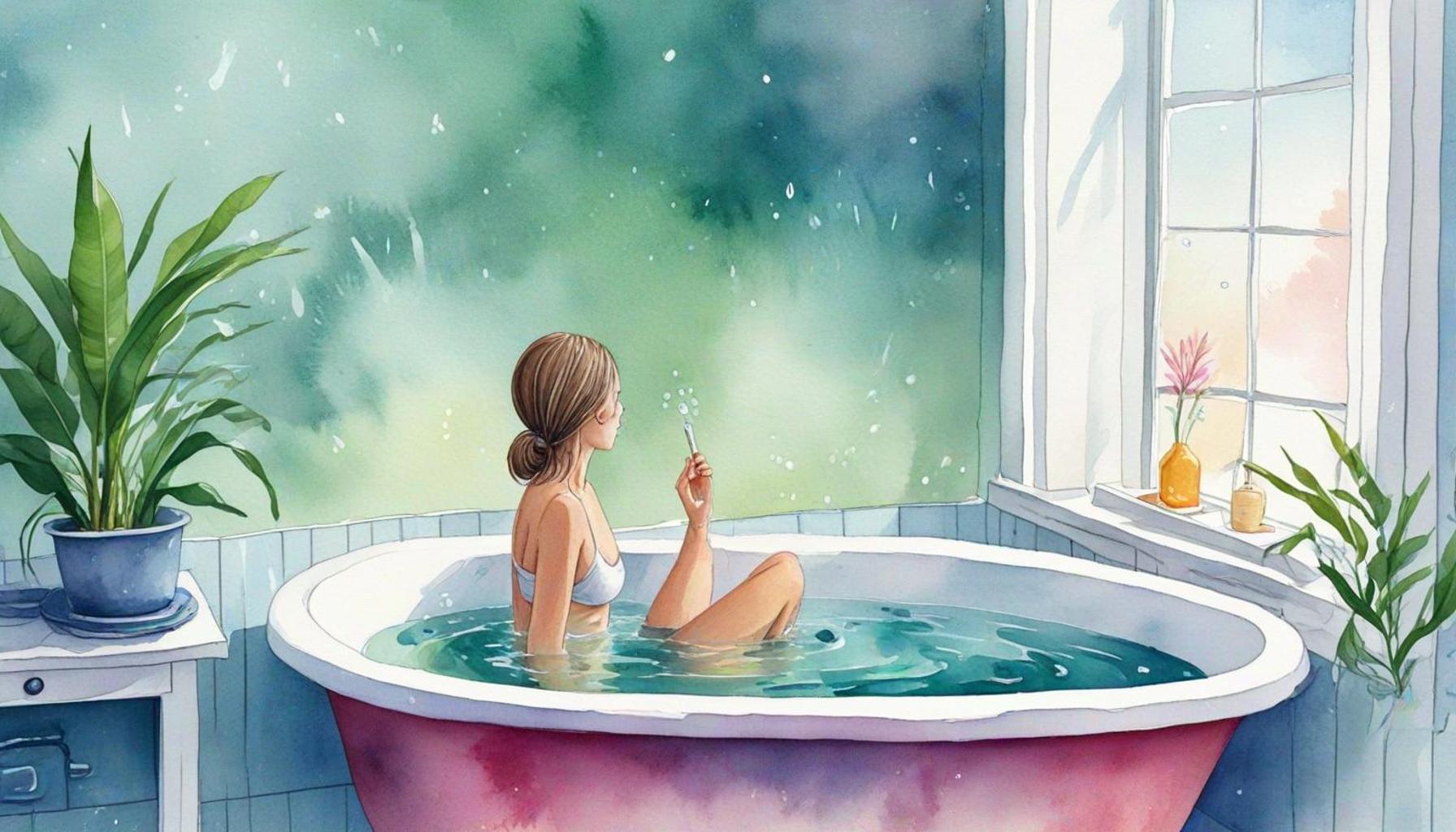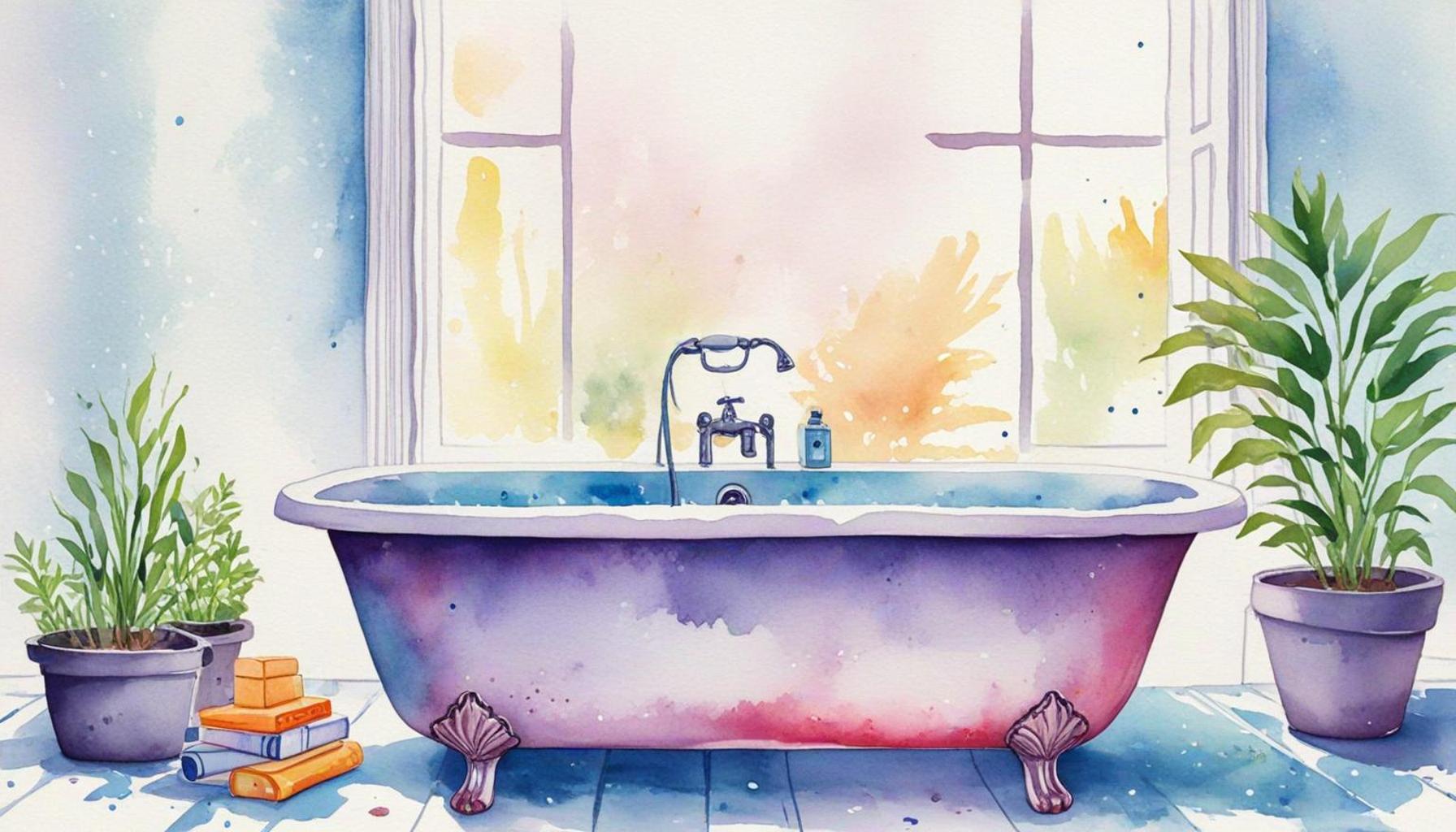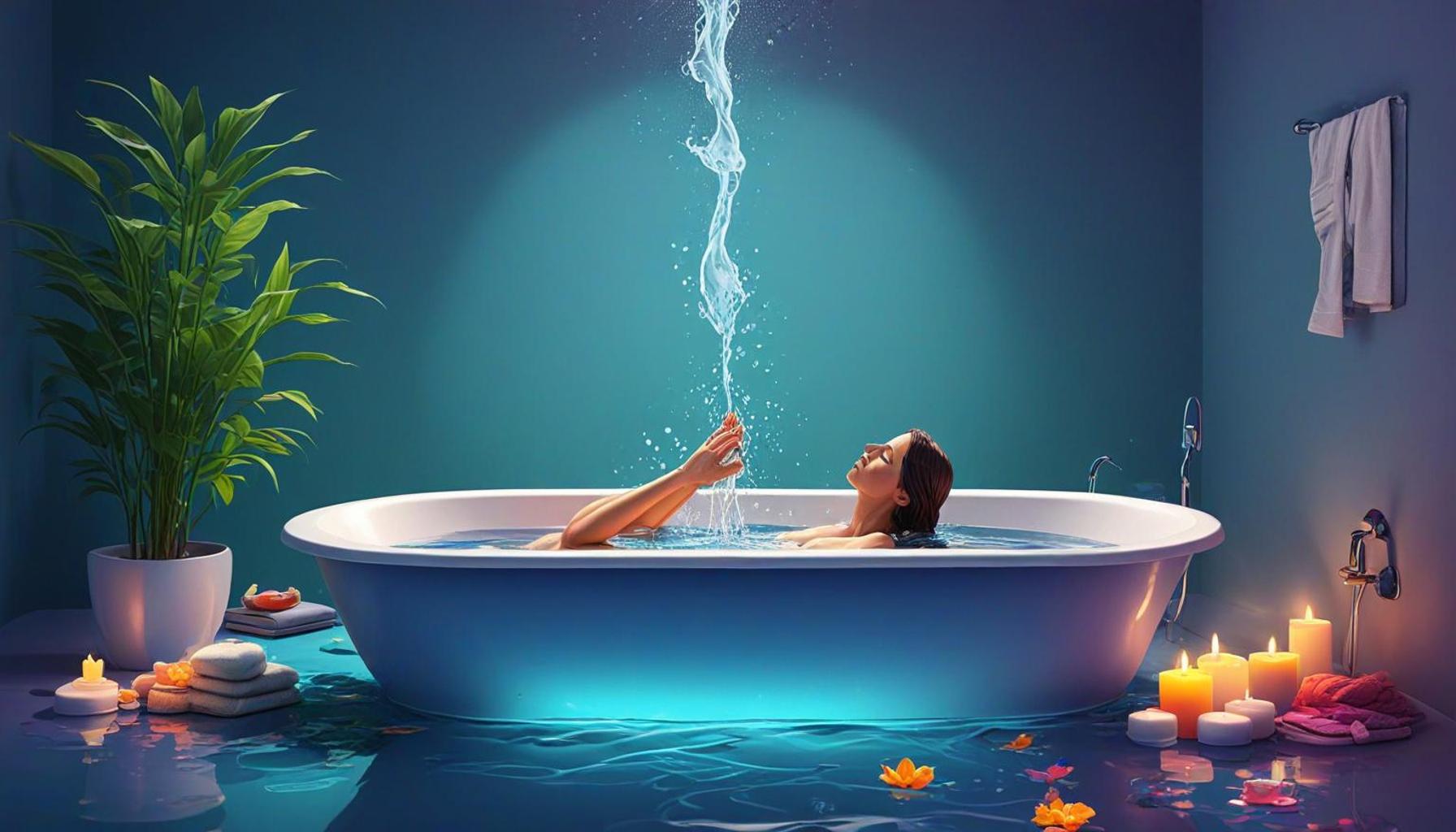The Connection Between Water and Movement: Incorporating Gentle Yoga Practices into Bath Meditation for Deep Relaxation
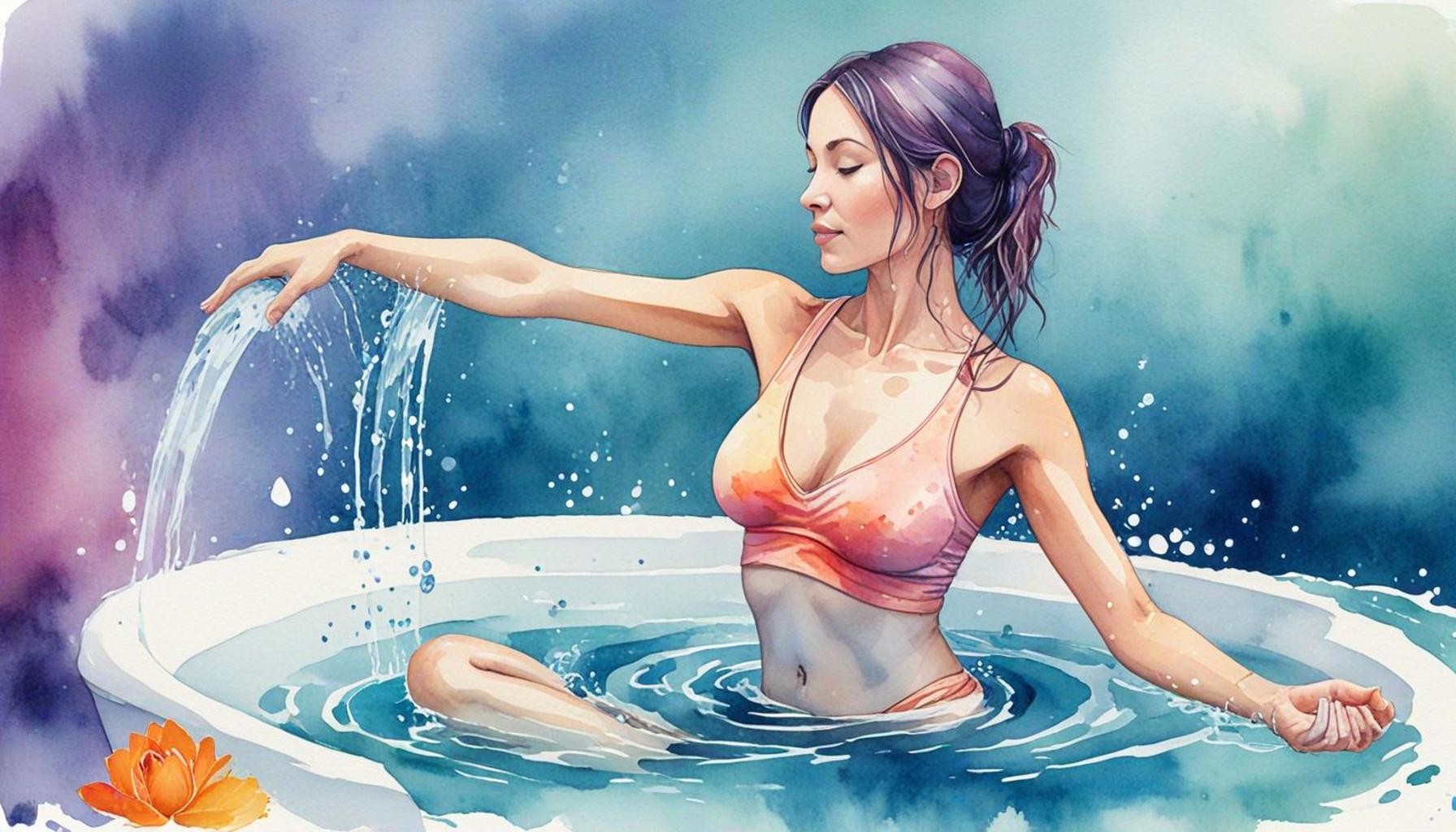
Experiencing Tranquility Through Water and Movement
In today’s fast-paced world, carving out moments of serenity is vital for maintaining our physical and mental well-being. The fusion of water and movement presents an extraordinary opportunity to cultivate relaxation in our lives. Visualize the experience of slipping into a warm bath, where the warm water envelops you and creates a sensation of weightlessness. This environment is not only calming but also provides a perfect backdrop for engaging in mindful stretches that harmonize both body and mind.
Bath meditation, when combined with gentle yoga practices, offers numerous benefits for those seeking a peaceful retreat from the chaos of everyday life. Here are some of the key advantages:
- Enhanced relaxation: The buoyancy of water supports your body, allowing for deeper stretches that might be challenging on land. Imagine the soothing properties of a warm bath accompanying your gentle yoga flow, relieving tension in your muscles and promoting an intricate harmony between mind and body.
- Stress reduction: Immersing yourself in water while practicing gentle movements can significantly lower stress levels. The rhythmic nature of both water and yoga movements fosters a peaceful state of mind, making it easier to let go of daily worries.
- Mind-body connection: Gentle movements invite you to cultivate awareness of your body and breath, anchoring your thoughts in the present moment. This deepened connection can be profoundly transformative, especially in the hustle and bustle of Nigeria’s urban landscape.
Integrating these practices into your daily routine can completely transform your approach to self-care. In Nigeria, where access to extensive wellness resources might be limited, establishing a soothing sanctuary in your home is particularly beneficial. Creating your oasis need not be elaborate; simple items like a basin of warm water, infused with calming scents—such as lavender or ginger—and your favorite yoga mat can create a soothing escape.
As you explore this enchanting relationship between water and movement, an array of techniques awaits your discovery to enhance your bath meditation experience. For example, practicing slow, mindful movements while submerged in water can heighten sensations of calm. Experimenting with different breathing techniques, such as diaphragmatic breathing, can deepen your level of relaxation. Additionally, listening to soft music or nature sounds can elevate your meditative experience.
Ultimately, as you integrate these practices into your life, you open up a pathway toward profound tranquility and wellness. By embracing the harmony of water and movement, you not only nurture your body but also enrich your spirit, paving the way for a more balanced and peaceful existence.
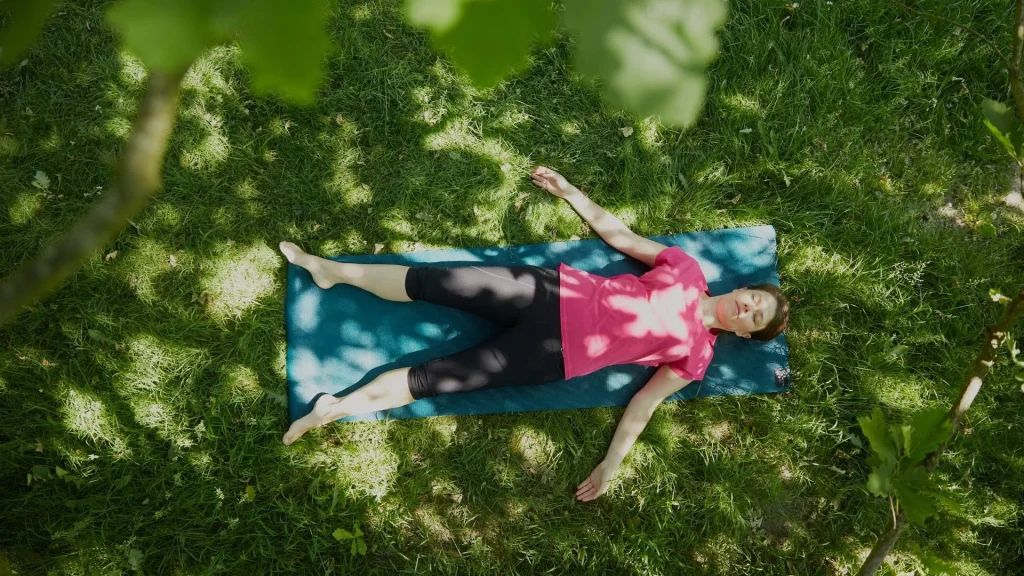
ADDITIONAL INSIGHTS: Expand your understanding here
The Synergy of Water and Gentle Movement
The experience of water is transformative, its liquid embrace facilitating relaxation in profound ways. When incorporated into a bath meditation practice, the movements encouraged by gentle yoga create a powerful synergy that can enhance well-being and invite serenity into our often tumultuous lives. The warm water acts as a natural conductor, elevating the effects of relaxation and mindfulness practices.
Engaging in gentle yoga within a bath environment uniquely complements the properties of water. Here’s how:
- Buoyancy and Support: The warm bath water provides essential support for the body, reducing the gravitational load on joints and muscles. This buoyancy allows practitioners to experience deeper stretches that facilitate greater flexibility and ease of movement, contributing to overall well-being.
- Circulation Boost: The combination of gentle movements and warm water aids blood circulation. Enhanced circulation promotes the delivery of oxygen and essential nutrients to the body’s tissues, facilitating recovery and leaving you feeling revitalized and rejuvenated.
- Mindfulness Enhancement: The calming sound of water can foster a deeper state of mindfulness. By focusing on the sensations of water and the rhythm of your breath, practitioners can cultivate a heightened awareness of being present, helping to ground thoughts and alleviate worries.
In Nigeria, where rapid urbanization and the hustle and bustle of city life can take a toll on our mental health, practicing these techniques in the comfort of our homes can become an essential ritual for self-care. Imagine a simple setup: a basin filled with warm water, perhaps infused with local herbs like lemongrass or peppermint for added therapeutic benefits, transforming your space into a tranquil oasis.
As you explore the gentle yoga movements suited for water immersion, these practices often include poses that emphasize fluidity and grace. Some examples are the Cat-Cow Stretch or the Seated Forward Bend, both of which can be adapted for a bath setting. These poses promote not only physical health but also mental clarity. Practicing mindful breathing alongside can further deepen your relaxation. For instance, focusing your breath on the rise and fall of your belly while feeling the gentle resistance of the water can anchor you in the moment.
By integrating such practices, you set the stage for a holistic experience that embraces both body and mind. The connection between water and movement offers a path toward deep relaxation and rejuvenation, inviting an intricate balance that echoes through every facet of your life. This serene routine encourages you to take a break from everyday stressors, fostering not just personal peace but a harmonious existence.
The Connection Between Water and Movement: Incorporating Gentle Yoga Practices into Bath Meditation for Deep Relaxation
Exploring the Synergy of Water and Yoga
Water, with its calming presence, serves as a perfect partner to the soothing practice of yoga. Imagine sinking into a warm bath, allowing the water to envelop you, and pairing that with gentle yoga movements designed to promote relaxation. This combination is not just indulgent; it taps into the powerful benefits of hydrotherapy—creating a unique atmosphere for both physical and mental rejuvenation.The gentle movements of yoga can be seamlessly integrated into bath meditation, allowing practitioners to explore sensations and experiences that promote mindfulness. These movements help release tension in the body, enhancing the relaxation response fostered by warm water.
| Advantages | Description |
|---|---|
| Enhanced Relaxation | Incorporating yoga in water creates a serene environment that strengthens mind-body connection. |
| Increased Flexibility | Warm water allows for deeper stretches, improving muscle elasticity during gentle yoga sessions. |
Furthermore, practicing yoga within a bath can promote mindfulness and presence, heightening your ability to engage with your emotions and thoughts without judgment. This mental clarity can carry over into daily activities, enriching your life beyond the bath.Another essential aspect to consider is the use of aromatherapy oils in conjunction with gentle stretching in the water. Adding a few drops of calming essential oils can enhance the overall experience, making the meditation session not only a physical journey but also an olfactory delight.Investigating the profound effects of integrating gentle yoga practices into bath meditation continues to unveil new pathways for relaxation and emotional balance. Each practice unveils a deeper understanding of self, ensuring a holistic approach to wellness.
RECOMMENDED: Check out this similar article
Embracing the Elements: Techniques for Bath Meditation
To maximize the therapeutic qualities of bath meditation, it’s essential to incorporate specific techniques that align with the principles of gentle yoga and the soothing presence of water. These practices not only enhance relaxation but also foster a deeper connection to both the physical and mental realms of well-being.
One technique gaining traction in wellness circles is the concept of Visual Presence. While submerging in the warm water, practitioners are encouraged to focus their gaze on the surface of the water, observing the subtle ripples and movements. This practice cultivates a state of mindfulness, allowing thoughts to dissipate as concentration shifts towards the beauty of the natural elements. By inviting the senses to engage fully, meditation transcends the physical space, helping practitioners feel more anchored in their surroundings.
Additionally, the use of essential oils can elevate the bath experience, promoting relaxation and introspection. In Nigeria, essential oils derived from indigenous plants, such as ginger and frankincense, can be mixed with bath water for their calming properties. These scents can evoke pleasant memories or connections to nature, unleashing feelings of nostalgia and peace that resonate with the practice of yoga.
Integrating the practice of Afro-Indigenous Movement can also be particularly enriching. Movements that are inspired by traditional African dances can be adapted for water immersion. These rhythmic and fluid motions harmonize seamlessly with the natural currents of water, allowing participants to feel liberated and connected to ancestral traditions. This blend of gentle yoga and culturally-rooted movements can promote emotional healing as well as physical wellness.
Furthermore, guided imagery meditation can be seamlessly brought into your bath meditation. As you float or move in warm water, allow your mind to visualize tranquil scenes—perhaps a serene river in the lush Niger Delta or the rhythmic waves along the Atlantic coast. By harnessing vivid imagery, practitioners can enhance relaxation and foster a deeper sense of tranquility, promoting mental clarity and emotional resilience.
Another remarkable aspect of bath meditation is the concept of breathwork. Breathing exercises, paired with gentle movements, can significantly heighten relaxation during the bath experience. For example, practitioners can practice the 4-7-8 breathing technique—inhale for four counts, hold for seven, and exhale for eight. This rhythmic breathing can calm the nervous system and further amplify the soothing properties of the warm water, often leading to a remarkable sense of peace and calm.
The integration of these techniques underscores the essence of the connection between water and movement, making bath meditation a truly holistic practice. As people seek out ways to nurture their physical and mental health in dynamically competitive environments, the gentle offerings of yoga, water, and mindfulness in a familiar setting become marvelously therapeutic tools for balanced living. Engaging in these experiences not only supports personal wellness but can also lead to a collective resurgence in well-being throughout communities.
SEE ALSO: Click here to read another article
Conclusion: The Healing Power of Water and Movement
The intricate relationship between water and movement serves as a powerful foundation for achieving profound relaxation through bath meditation. By embracing gentle yoga practices and incorporating diverse techniques, individuals can experience a holistic approach to wellness that nurtures both mind and body. The use of essential oils and breathwork not only enriches the experience but also encourages deeper introspection, while the incorporation of Afro-Indigenous Movement roots participants in their cultural heritage, elevating emotional well-being.
Moreover, the practice of guided imagery within the serene waters can transport practitioners to tranquil landscapes, cultivating vivid mental escapes that enhance both relaxation and clarity. As we navigate through the modern world’s demands, finding solace in the gentle embrace of water can offer essential respite and resilience.
In Nigeria, where the vibrancy of cultural traditions meets the therapeutic qualities of nature, the act of combining yoga with bath meditation creates not just a personal sanctuary but also a communal pathway toward healing. The integration of these practices can contribute positively to the collective health of communities, creating ripples of wellness that extend beyond the individual.
Ultimately, the journey to discover the connection between water and movement invites individuals to engage in self-care, explore cultural legacies, and foster a profound sense of tranquility. As we continue to explore this synergy, we can unlock new dimensions of well-being—encouraging all to dive into the depths of relaxation that bath meditation offers.

